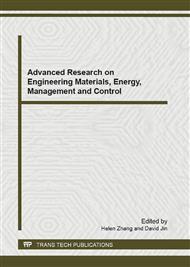p.1179
p.1187
p.1191
p.1195
p.1199
p.1203
p.1207
p.1211
p.1215
Analysis and Implementation of a Zero-Voltage-Switching Zeta Converter
Abstract:
A zero-voltage-switching (ZVS) Zeta converter is proposed in this paper. Two separate inductors in the conventional Zeta converter are magnetically coupled in the proposed converter. The output diode is replaced with an active switch. Also, an auxiliary inductor is utilized. The ZVS operation of both main and auxiliary switches is achieved and the switching loss is significantly reduced. Moreover, the ripple component of the output inductor current is effectively removed and the output filter stage can be simplified. To verify the feasibility and performance of the proposed converter, an experimental prototype was built and tested.
Info:
Periodical:
Pages:
1199-1202
Citation:
Online since:
January 2012
Authors:
Price:
Сopyright:
© 2012 Trans Tech Publications Ltd. All Rights Reserved
Share:
Citation:


